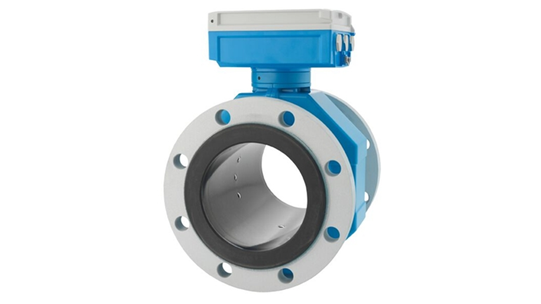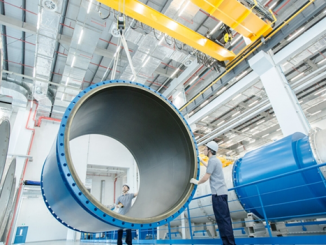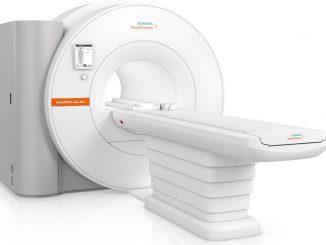
November is Magnetic Sensing Month at Magnetics Magazine!
Stay tuned and check the website frequently for new updates on the latest technology for magnetic sensing.
In the water and wastewater industry, high measurement accuracy is indispensable for optimal process control but a variety of influences such as a close-knit pipeline network or obstacles in the pipe can cause flow turbulences that affect accuracy. Now, Endress+Hauser has developed what it says is the world’s first magmeter to measure flow independently of flow profile and mounting location.
A world leader in electromagnetic flow measurement, the Swiss company counts more than two million of its magmeters sold since 1977. The recently introduced Promag W features a “0 x DN full bore” option that the company says is the first and only electromagnetic flowmeter with no inlet and outlet runs (0 x DN), no measuring tube restriction (full bore) and thus no pressure loss. The new and innovative measuring concept features multiple measuring electrodes that detect the flow, generating a substantially higher density of measured data than for standard devices.
The system can be applied to several of its already established models making them particularly suitable for installation in tight spaces as they do not need any inlet or outlet runs. They can easily handle frequently occurring swirl downstream of obstacles such as pipe bends, insertion devices, build-up on the pipe wall, protruding seals or different inside diameters.

Together with refined signal analysis, reliable measurement results also for swirl are possible. Previously, in case of flow disturbances, plant operators either had to comply with the recommended inlet and outlet runs or use a device with a restricted measuring tube that calms swirl. Yet sufficiently long straight pipe sections are often not present and restrictions cause pressure loss along with higher energy consumption and costs for pump operation.
Technology explained
Endress+Hauser gives this description of the principle of electromagnetic flow measuring: Faraday’s law of induction states that a metal rod moving in a magnetic field induces electrical voltage. This dynamo principle also governs the way electromagnetic flowmeters work. As soon as the electrically charged particles of a fluid cross the artificial magnetic field generated by two field coils, an electric voltage is induced. This voltage, tapped by two measuring electrodes, is directly proportional to the velocity of flow and thus to the flow volume. The magnetic field is generated by a pulsed direct current with alternating polarity. This ensures a stable zero point and makes the flow measurement insensitive to multiphase or inhomogeneous liquids, as well as low conductivity.
The popularity of magmeters across innumerable sectors of industry continues to be unabated, further proof of the worldwide success that this measuring principle has been enjoying for more than 60 years, says the company. Magmeters can be used to measure all electrically conductive liquids above 5 µS/cm with or without solids including water, wastewater, sludge, slurries, pastes, acids, alkalis, juices or fruit mashes. The rule of thumb for magmeters, the company notes, is that anything that can be pumped can also be measured – a highly valued trait in measurement technology. Typical tasks include measuring and monitoring continuous flow rates, filling and dosing as well as applications in custody transfer. For more info, see www.endress.com.



